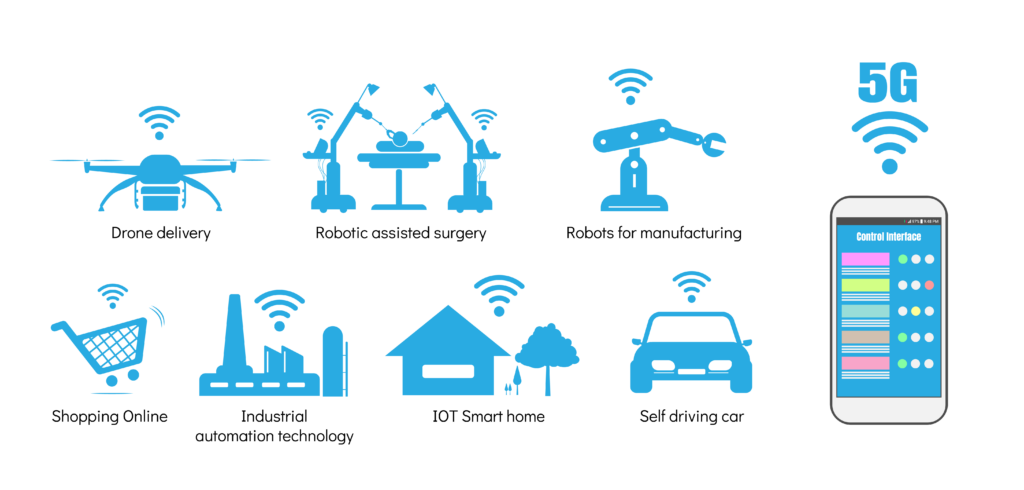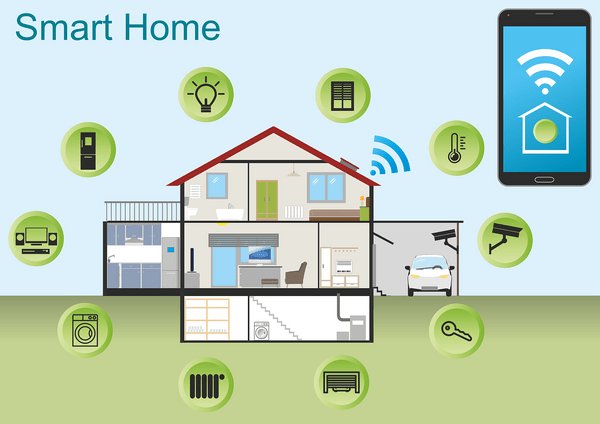Welcome to a fascinating exploration of how 5G technology is revolutionizing home automation. With lightning-fast speeds and ultra-low latency, 5G is enabling a whole new level of connectivity and control within our homes. From smart thermostats to security cameras to voice-activated assistants, 5G is paving the way for a more seamless and efficient home automation experience. Join us as we delve into the exciting possibilities of this cutting-edge technology. Have you ever wondered how 5G technology can revolutionize the way we interact with our homes? You may be surprised to learn about the significant role that 5G plays in advancing home automation. From faster speeds to increased connectivity, 5G has the potential to completely transform the way we experience smart home technology. Let’s dive into the intricate details of how 5G is shaping the future of home automation.

Understanding the Basics of 5G
Before we delve into the impact of 5G on home automation, it’s essential to have a solid understanding of the basics of 5G technology. 5G stands for the fifth generation of wireless technology, offering significantly faster speeds and lower latency compared to its predecessors. With speeds up to 100 times faster than 4G, 5G has the potential to revolutionize various industries, including home automation.
So, What Exactly is 5G?
5G technology operates on higher radio frequencies, which allow for faster data transmission speeds compared to 4G. These higher frequencies also offer increased capacity and lower latency, enabling real-time communication between devices. This means that devices connected to a 5G network can communicate with each other almost instantaneously, making it ideal for home automation applications.

The Benefits of 5G in Home Automation
Now that we have a basic understanding of 5G technology, let’s explore the specific benefits that 5G brings to home automation. From enhanced connectivity to improved security, 5G technology offers a multitude of advantages for smart homes.
Enhanced Connectivity
One of the key benefits of 5G technology in home automation is its ability to provide enhanced connectivity. With its faster speeds and lower latency, 5G enables seamless communication between smart devices in your home. This means that your smart thermostat can communicate with your smart lights almost instantaneously, creating a more efficient and integrated smart home ecosystem.
Improved Security
Another significant advantage of 5G in home automation is improved security. With its advanced encryption capabilities and secure network connections, 5G technology provides a higher level of security for smart home devices. This means that your smart door locks, security cameras, and other connected devices are less vulnerable to cyber attacks, ensuring the safety and privacy of your home.
Increased Efficiency
5G technology also contributes to increased efficiency in home automation. With faster speeds and lower latency, smart devices can operate more efficiently, reducing response times and improving overall performance. This increased efficiency not only enhances the user experience but also leads to savings in energy consumption and costs.
Seamless Integration
One of the most significant benefits of 5G in home automation is its ability to facilitate seamless integration between smart devices. With 5G technology, different smart devices can communicate with each other effortlessly, leading to a more cohesive and interconnected smart home ecosystem. This seamless integration allows for more personalized and tailored automation experiences, enhancing convenience and comfort for homeowners.

Applications of 5G in Home Automation
Now that we’ve explored the benefits of 5G technology in home automation let’s take a closer look at some specific applications of 5G in smart homes. From smart appliances to home security systems, 5G technology is poised to transform the way we interact with our homes.
Smart Appliances
One of the most prominent applications of 5G in home automation is the proliferation of smart appliances. With 5G technology, smart appliances such as refrigerators, ovens, and washing machines can communicate with each other and with external services more efficiently. This connectivity allows for remote monitoring and control of appliances, as well as energy optimization based on real-time data and usage patterns.
Home Security Systems
5G technology also plays a crucial role in advancing home security systems. With its low latency and high bandwidth capabilities, 5G enables faster and more reliable communication between security cameras, motion sensors, and other surveillance devices. This real-time connectivity allows for swift notification of security breaches and enables homeowners to monitor their homes remotely with greater clarity and responsiveness.
Voice Assistants
Voice assistants such as Amazon Alexa and Google Assistant have become ubiquitous in smart homes, providing users with hands-free control over their connected devices. With the power of 5G technology, voice assistants can leverage faster data speeds and lower latency to deliver more responsive and accurate results. This enhanced performance enables voice assistants to interact with a wider range of smart devices seamlessly, enhancing the overall smart home experience.

Challenges and Considerations
While the benefits of 5G technology in home automation are undeniable, there are also challenges and considerations that need to be addressed. From network coverage to compatibility issues, it’s essential to be aware of potential hurdles when implementing 5G technology in smart homes.
Network Coverage
One of the primary challenges of 5G technology in home automation is network coverage. While 5G networks are rapidly expanding, there are still areas with limited coverage, which can impact the reliability and performance of smart home devices. It’s crucial to ensure that your home is located within a 5G coverage area to fully leverage the benefits of 5G technology in home automation.
Compatibility Issues
Another consideration when adopting 5G technology in home automation is compatibility with existing smart devices. Not all smart devices are designed to work with 5G networks, which can lead to compatibility issues and connectivity problems. Before investing in 5G-enabled smart devices, make sure to check their compatibility with 5G networks to avoid any potential issues.
Security Concerns
With the increasing connectivity of smart devices in the home, security concerns become a significant consideration. 5G technology may introduce new security vulnerabilities that could be exploited by cybercriminals. It’s essential to implement robust security measures, such as encryption and authentication protocols, to protect your smart home devices from potential cybersecurity threats.

The Future of Home Automation with 5G
As 5G technology continues to evolve, the future of home automation looks promising. With its unparalleled speed, connectivity, and efficiency, 5G has the potential to revolutionize the way we interact with our homes. From enhanced smart home experiences to improved security and energy efficiency, 5G technology is reshaping the landscape of home automation for the better.
In conclusion, the role of 5G in advancing home automation cannot be overstated. From enhanced connectivity and security to increased efficiency and seamless integration, 5G technology offers a multitude of benefits for smart homes. By understanding the basics of 5G, exploring its applications in home automation, and addressing challenges and considerations, you can harness the power of 5G to create a more intelligent, convenient, and secure living environment. Embrace the future of home automation with 5G technology and unlock the true potential of your smart home.

